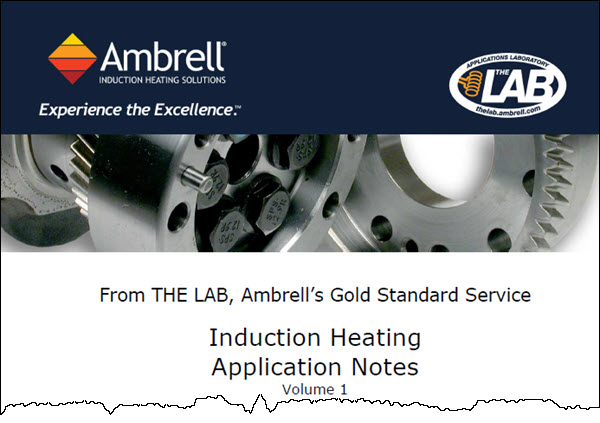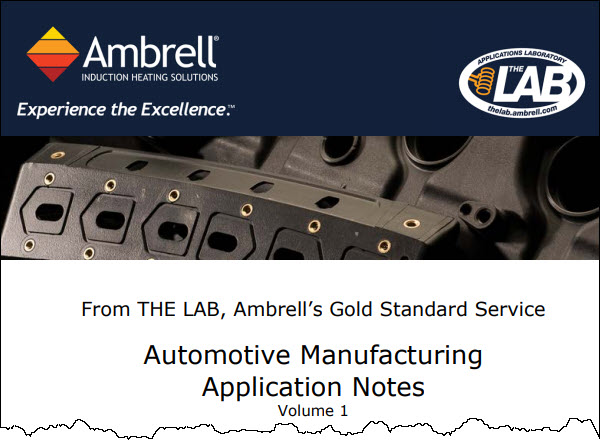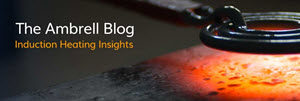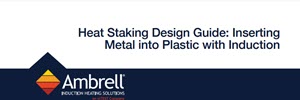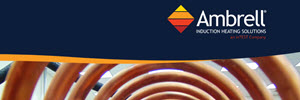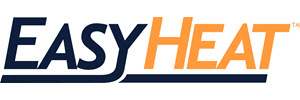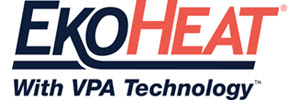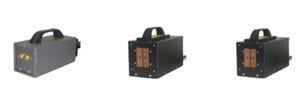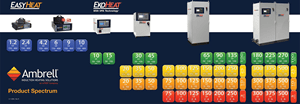Induction Heat Staking & Reflow
- Home
- How It's Used
- Heat Staking
How does induction heat staking work?
Sometimes called thermal staking (or plastic reflow, indirect heating) is a process by which a metallic insert is heated and pressed into a plastic material which has been drilled with a hole that is slightly smaller than the insert, resulting in an interference fit as the plastic melts and reflows around the insert.
Induction generates an electromagnetic field in a work coil that induces currents in the conductive material of a workpiece placed within or near the coil. Friction from these currents elevates the temperature of the workpieces to be inserted.
Benefits of Using Induction for Heat Staking
Induction heating delivers precise, consistent heating results to meet tight production tolerances. Our non-contact induction staking solutions provide targeted, localized heating without open flame.
Since induction heats only the metal inserts, the process is efficient and repeatable.
heat staking Application Notes
Select from our collection of heat staking notes, developed over 39 years supporting our customers. Read how we helped to solve their process heating challenges!
 Heating a Steel Pin for Fan Insertion
Heating a Steel Pin for Fan Insertion
An EASYHEAT and its workhead require a minimal footprint, saving the client valuable floor space compared to heating alternatives
 Heating Steel Inserts for Metal-to-Plastic Insertion
Heating Steel Inserts for Metal-to-Plastic Insertion
It took 5 seconds with a 2 kW EASYHEAT to reach temperature, which melted the plastic for a solid bond without cracking the molded plastic.
 Heating four brass inserts for a plastic motor housing
Heating four brass inserts for a plastic motor housing
Using induction heating, the parts came to the required temperature in just 15 seconds in a highly repeatable heating method and a coil plate could offer protection against operator movement/errors
To heat steel inserts to be placed into a plastic frame. The end product is an automotive part.
 Heating stainless steel inserts
Heating stainless steel inserts
Induction offers dramatically faster heating when compared to ultrasonics; faster heating means there is the potential to dramatically increase production rates with a highly repeatable and easy-to integrate processes.
Innovation: Ambrell's Applications Lab was able to solve a problem that a competitor couldn't solve, which is a key benefit when purchasing induction solutions from Ambrell
 Bonding plastic handles onto metal brooms
Bonding plastic handles onto metal brooms
With a more reliable induction heating system, they will not have to worry about lost production due to power supply issues that come with an unreliable system
 Metal-to-plastic insertion of threaded magnetic steel inserts
Metal-to-plastic insertion of threaded magnetic steel inserts
Outdated equipment and poor responsiveness drove this customer to a new vendor who could help them with new or improved processes for new or enhanced solutions
 Bonding an Arthroscopic Device
Bonding an Arthroscopic Device
Induction is used to bond the device sheath to collet. Innovative coil design lifts production rate.
 Heat a steel shaft for insertion
Heat a steel shaft for insertion
Induction heating provides hands-free heating that involves no operator skill for manufacturing, even distribution of heating and localized application of energy limits temperature drift
 Inserting brass bushing into plastic wire connector
Inserting brass bushing into plastic wire connector
A three turn helical coil is used to heat the brass bushing. The brass bushing is heated for 2 seconds and then placed on the wire connector & pressed into position.
 Heating steel for insertion into polypropylene
Heating steel for insertion into polypropylene
Induction heating provides 'greener' manufacturing of pallets using reusable, recyclable materials, hands-free heating that involves minimal operator skill for manufacturing and even distribution of heating
 Inserting threaded brass parts into plastic thermostat housing
Inserting threaded brass parts into plastic thermostat housing
This application has three different coils for varying hole patterns. A three turn oblong coil is used to heat 2 brass inserts in close proximity.
 Inserting a piston stop & o-ring (oil pump)
Inserting a piston stop & o-ring (oil pump)
Induction heating provides increased production speed, simpler tooling for customer, hands-free heating that involves no operator skill for manufacturing
 Bonding electric motor shaft to nylon face fan
Bonding electric motor shaft to nylon face fan
Induction heating provides hands-free heating that involves no operator skill for manufacturing, only the metal shaft is heated so the motor is not affected, increased production due to rapid heating, decreased failure rate, originally used glue which ran into motor and caused failure and stronger bond
 Heating Four Inserts Simultaneously
Heating Four Inserts Simultaneously
The brass inserts are to be heated prior to insertion into a plastic automotive sub assembly
Heating is to be accomplished within 5 seconds, and can be done in a helical coil since pick and place manufacturing is employed.
To heat internally threaded steel inserts to a temperature above 650 °F for insertion into plastic lawn chair assemblies.
To heat the ends of 0.072-inch spring wire, spaced 1/2 inch apart, uniformly for the application of nylon powder on a 1inch length of the end.
 Inserting Steel Studs into a Plastic Tail Light
Inserting Steel Studs into a Plastic Tail Light
To heat threaded steel studs for insertion into a plastic tail-light assembly at 450 °F.
 Metal-to-Plastic Insertion with a Steel Insert
Metal-to-Plastic Insertion with a Steel Insert
The power was turned on for five seconds and the part was monitored during heating and for 15 seconds after.
 Metal-to-Plastic Insertion with a Brass Shaft
Metal-to-Plastic Insertion with a Brass Shaft
Multiple torches were required for this application previously, so the compact EASYHEAT minimized the required footprint for heating. With induction you can expect the same result every time, while variability is often observed with a torch
Thermoplastics will flow at elevated temperatures and the solidified polymer can be re-heated to re-flow around the insert. Thermosetting polymers, once the shape has been cast, will no longer melt or flow on reheating. Table 1 shows some typical temperatures, time and power required for different materials, as established in the Ambrell Applications Lab.
The diameter of the insert hole must be the correct size to allow the plastic to flow around the insert. If the hole is too small,extra plastic will be displaced. This displaced plastic is commonly called ‘flash.’ Excessive heat and pressure may also cause flash. If the hole is too large, not enough plastic will flow into the fins and knurls to achieve the desired holding strength.
From our blog
More heat staking resources
Headline
Add your content here.
Headline
Add your content here.
Headline
Add your content here.
Headline
Add your content here.
Our Systems for heat staking with Induction
Headline
Add your content here.
Headline
Add your content here.
Headline
Add your content here.
Headline
Add your content here.
AMBRELL CORPORATION
1655 Lyell Avenue
Rochester, NY 14606
United States
![]() Directions
Directions
T: +1 585 889 9000
F: +1 585 889 4030
Contact Sales
Contact Orders
Contact Service
AMBRELL B.V.
Holtersweg 1
7556 BS Hengelo
The Netherlands
![]() Directions
Directions
T: +31 880 150 100
F: +31 546 788 154
Contact Sales
Contact Orders
Contact Service
AMBRELL Ltd.
Front Suite, 1st Floor, Charles House
148-149 Gt Charles Street
Birmingham, B3 3HT
United Kingdom
T: +44 1242 514042
F: +31 546 788 154
Contact Sales
Contact Orders
Contact Service


 Heat Staking Steel Parts
Heat Staking Steel Parts Heating brass inserts
Heating brass inserts Brass Inserts
Brass Inserts Plastic Lawn Chairs
Plastic Lawn Chairs Brassiere Underwire
Brassiere Underwire